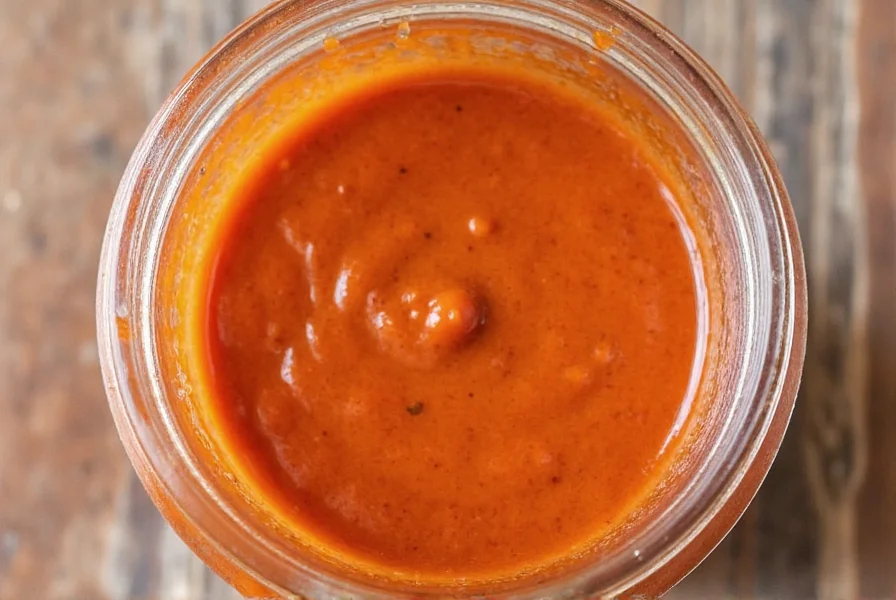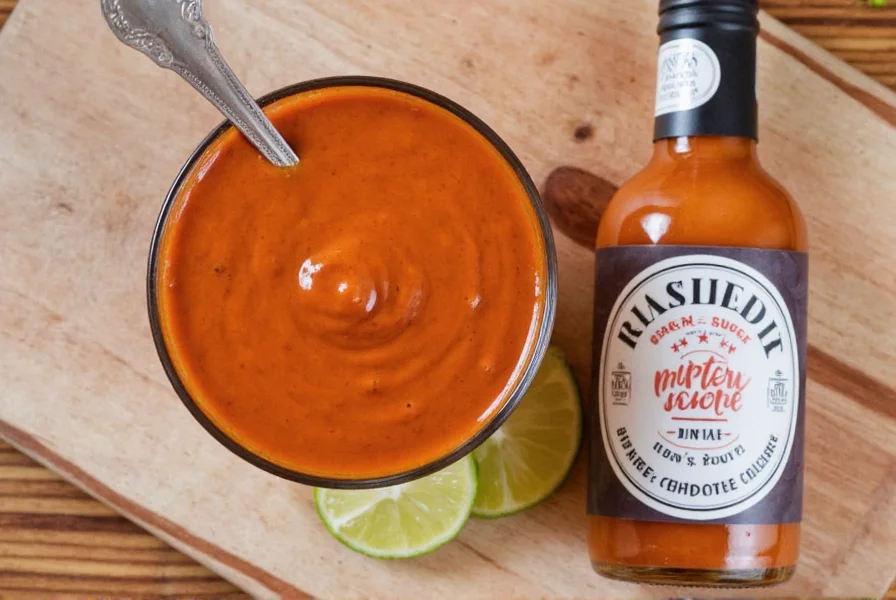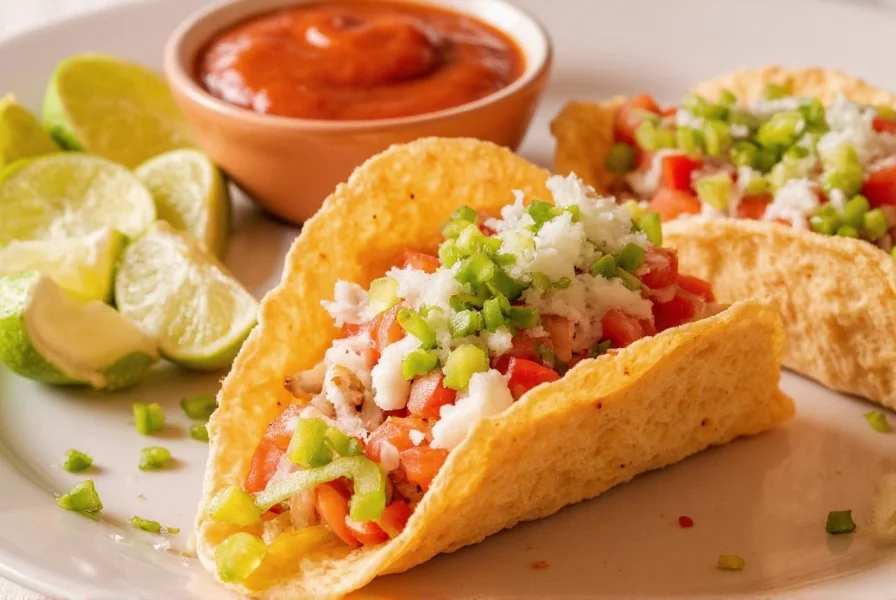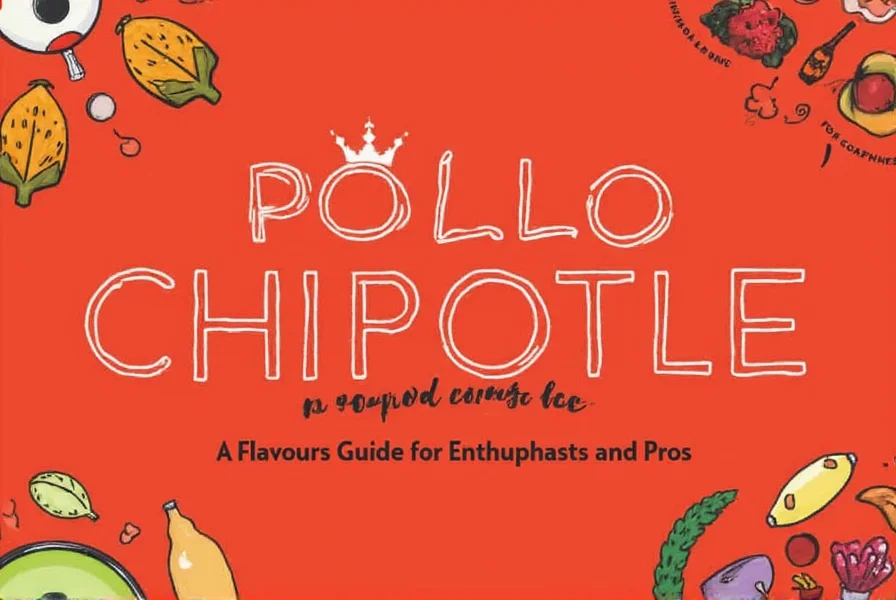Table of Contents
What is Chipotle Sauce and Why It's Essential for Tacos
Chipotle sauce is a smoky, spicy condiment made from smoked jalapeño peppers blended with adobo sauce, garlic, lime, and oil. It adds deep flavor complexity to tacos without overwhelming other ingredients. This guide provides everything you need: a simple homemade recipe, top store-bought brands, and expert techniques to maximize flavor and adjust heat levels for perfect tacos every time.

Why Chipotle Sauce is Essential for Tacos
Chipotle sauce elevates tacos through its unique smoky heat profile. Unlike generic hot sauces, it delivers balanced flavor that complements rather than masks taco fillings. Here's why it's indispensable:
- Smoky Depth: The smoking process creates rich, earthy notes that enhance meat, vegetables, and beans.
- Balanced Heat: Slow-burning spice builds gradually, allowing flavor to shine without overwhelming.
- Universal Pairing: Works perfectly with all taco proteins—from carnitas and shrimp to plant-based options.
- Texture Control: Smooth consistency spreads evenly without making tortillas soggy.

How to Make Perfect Chipotle Sauce at Home
Homemade chipotle sauce lets you control heat and flavor. This foolproof recipe takes 5 minutes and yields restaurant-quality results:
- Ingredients: 5-6 canned chipotle peppers in adobo sauce (seeds removed for milder heat), 2 garlic cloves, 1/4 cup olive oil, 1 tbsp fresh lime juice, 1/2 tsp salt, 1 tsp smoked paprika (optional for extra smokiness).
- Process: Blend all ingredients in a food processor until smooth (1-2 minutes). For creamier texture, add 2 tbsp Greek yogurt or sour cream.
- Adjustment: Taste and refine: add lime for tang, salt for seasoning, or a pinch of sugar to balance heat. For hotter sauce, include pepper seeds.
- Storage: Refrigerate in an airtight container for up to 2 weeks. Freeze in ice cube trays for 3 months.

Best Store-Bought Chipotle Sauces for Tacos
| Brand | Heat Level | Flavor Profile | Best For | Price Range | Key Features |
|---|---|---|---|---|---|
| McCormick Chipotle Pepper Paste | Medium | Smoky, slightly sweet | Tacos, marinades, dips | $3-$5 | Ready-to-use, no additives |
| Salsa Verde Chipotle | Mild | Tangy, fresh, herbaceous | Chicken/fish tacos, veggie bowls | $4-$6 | Low-sodium, gluten-free |
| Chobani Chipotle Greek Yogurt | Medium | Creamy, zesty, protein-rich | Healthy tacos, wraps, salads | $5-$7 | Protein-packed, no artificial sweeteners |
| La Costena Chipotle Adobo | Hot | Authentic, bold, smoky | Traditional tacos, grilling marinades | $2-$4 | Minimal ingredients, authentic Mexican flavor |

Pro Tips for Using Chipotle Sauce in Tacos
Maximize flavor and avoid common mistakes with these expert techniques:
- Layer Strategically: Spread a thin layer on tortillas before adding fillings to lock in moisture and flavor.
- Balance Heat: Mix with avocado, sour cream, or Greek yogurt for creamy cooling effect.
- Pair Perfectly: Use with proteins like carnitas, grilled shrimp, or portobello mushrooms for optimal flavor synergy.
- Time It Right: Add sauce just before serving to prevent tortilla sogginess.
- Customize: Add a pinch of cumin or smoked paprika to homemade versions for extra depth.

Frequently Asked Questions About Chipotle Sauce for Tacos
What is the difference between chipotle peppers and chipotle sauce?
Chipotle peppers are smoked and dried jalapeños, while chipotle sauce blends these peppers with adobo sauce, garlic, lime, and oil for a smoother, more complex flavor. The sauce is specifically designed for easy spreading on tacos without overpowering other ingredients.
How can I adjust the heat level of chipotle sauce for sensitive eaters?
Reduce heat by: mixing with mayonnaise or Greek yogurt, adding honey or sugar to balance spice, blending in avocado for creaminess, diluting with lime juice, or removing pepper seeds before making homemade sauce.
What proteins pair best with chipotle sauce in tacos?
Chipotle sauce complements: carnitas (slow-cooked pork), carne asada (grilled steak), al pastor (spiced pork), grilled shrimp or fish, chicken tinga, barbacoa, and plant-based options like spiced lentils or portobello mushrooms.
How long does homemade chipotle sauce stay fresh?
Homemade chipotle sauce lasts 10-14 days refrigerated in an airtight container. For longer storage, freeze in ice cube trays (up to 3 months). Store-bought versions typically last 3-6 months unopened—check expiration dates.
Can chipotle sauce be used as a marinade for taco fillings?
Yes! It makes an excellent marinade: marinate chicken for 2-4 hours, beef/pork for 4-8 hours, and seafood for 30-60 minutes max. Always include acid (like lime juice) for tenderizing, and reserve fresh sauce for serving to avoid cross-contamination.
What are common mistakes to avoid when using chipotle sauce in tacos?
Avoid: applying too much (start with a thin layer), pairing with already spicy ingredients (risk of overwhelming heat), forgetting cooling elements like avocado or cabbage, adding sauce too early (causes soggy tortillas), and assuming all brands taste the same (always taste-test first).










 浙公网安备
33010002000092号
浙公网安备
33010002000092号 浙B2-20120091-4
浙B2-20120091-4